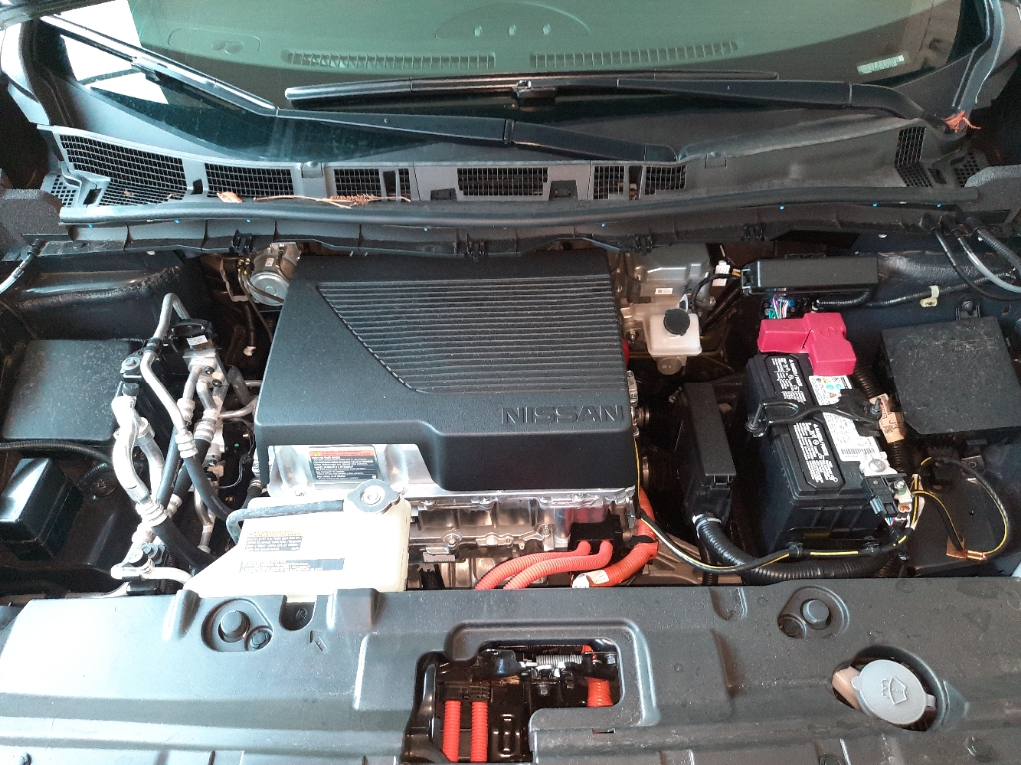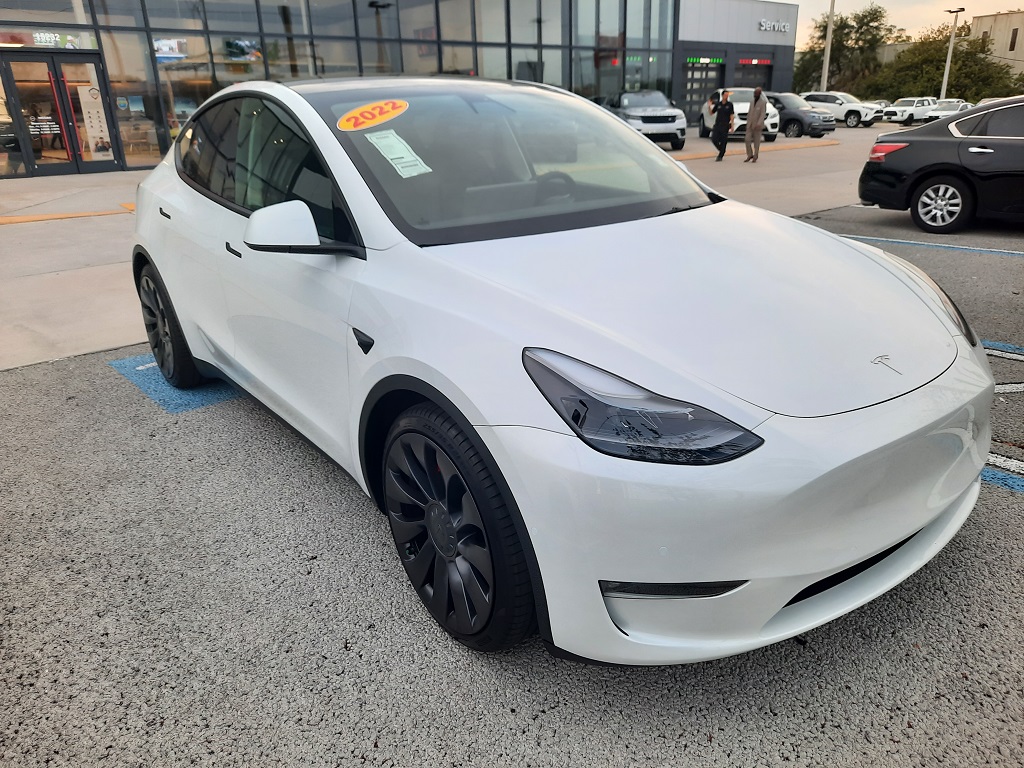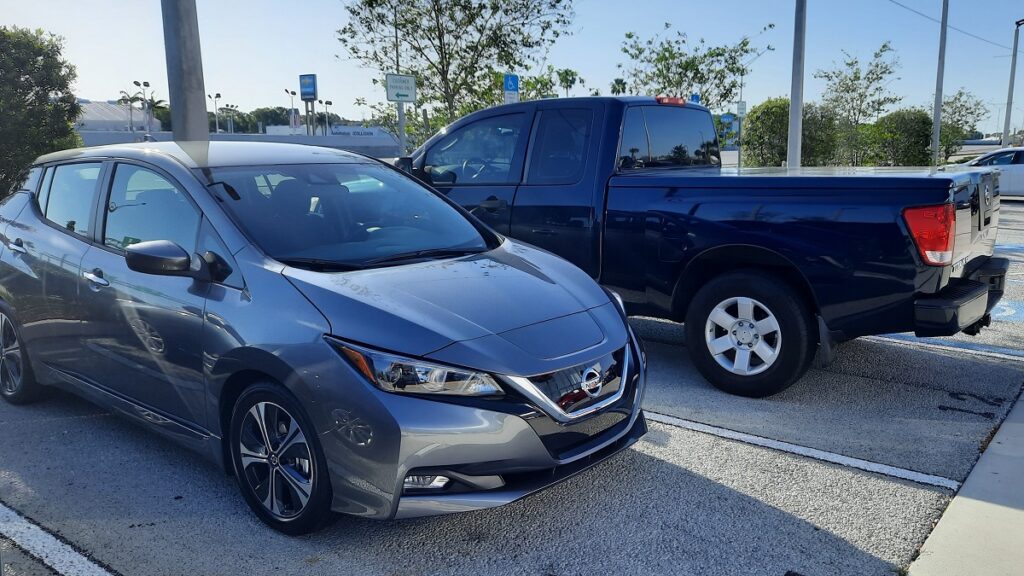I have been reading negative stories about electric cars lately. Some are legitimate concerns, some are so minor they are not worth mentioning and others are arguments that are not well thought out. Here I want to give you my opinion on electric cars and why they are not as bad as the naysayers want you to believe.
Currently, I drive a 2022 Nissan Leaf and my wife drives a 2022 Tesla Model Y. Previously I drove a 2015 Nissan Leaf, which I regrettably traded in for a truck that I thought we needed. After a few months, when we suddenly didn’t need the truck, I traded it for another leaf.
The main reason our government is pushing electric vehicles is that many believe they will help reduce carbon emissions and thus global warming. That is not why I bought my first electric car and it is not why I bought my second, either. I bought them primarily because they are practically maintenance-free and because they are far cheaper to operate than gasoline-powered vehicles. The large tax rebate didn’t hurt either.
Carbon Emissions
Let’s start with carbon emissions. My Leaf has the words “Zero Emission” displayed on the back which, as many naysayers will claim, is not true. Actually, it is usually not true but sometimes it is. It all depends on where the power comes from where you charge your car.
If the power you use to charge your car comes from a power plant that burns coal or other fuels, then the miles you drive indirectly translates into air pollution. If the power comes from a hydroelectric, solar, or wind turbine electric plant then it is truly zero emission.
The real issue is that the energy used to charge your electric car is generating pollution but nobody talks about how much pollution. According to the EPA, the average co2 emissions from a gallon of gas is 8,887 grams. According to U.S. Energy Information Administration, the average co2 emissions from the electric power industry is 0.85 pounds per kWh. This equates to 385.5 grams.
So let’s do some back-of-the-envelope calculations. My leaf is currently getting between 4.2 and 4.4 miles per kWh. Let’s round down and just use 4 miles per kWh. The EPA says 22 miles per gallon of gas is average. So, 8,887 grams, divided by 22 miles per gallon, equals 403.95 grams of co2 per mile. Times that by 4 and you get about 1,616 grams per 4 miles. Divide 1,616 by 385.5 and we see that the average gasoline-powered automobile pollutes 4.19 times that of an electric car that gets 4 miles per kWh. If we are really conservative and assume the average electric car driver gets 3.5 miles per kWh. That is still 3.67 times more carbon dioxide emissions from a gasoline vehicle.
Environmental Impact
There has been a lot of talk about the negative environmental impact of mining lithium for EV batteries. This is one area where the critics may be right but they fail to consider one very important fact. The importance of demand.
Many people don’t know this but electric cars were popular in the late 1800s but were killed off in 1912 when Henry Ford developed the modern assembly line and outpriced electric cars by more than half. Since then, electric cars were more of a novelty and nobody put any money into research and development because they knew they would not get a return on their investment. Thus, electric cars spent decades in limbo.
In the late 1990s, GM produced the EV1, which many thought was a great car, but it did not do well. GM produced 1,117 EV1s, all leased, and reclaimed the cars, only to destroy most of them. Some claim GM deliberately marketed the vehicles badly to prove to California regulators that electric vehicles were not a viable option.
It wasn’t until Tesla came on the scene in 2008 with its electric roadster and then Nissan with the all-electric Leaf in 2012 did electric cars start to gain traction in popularity. These last few years have really seen a spike in electric car sales, especially when gas prices started going through the roof the past year or so.
All of this demand, and profit, spur research as we have never seen before. If people do not buy these imperfect machines now, there will be no money or incentive to make future versions better. Today there are several companies working on battery technologies that will not only make batteries more efficient, longer lasting, and faster charging, but they will also be made with materials that are more common and cleaner to produce. I suspect in ten years we will see incredible advancements in batteries for everything from cars to cell phones to backup power for homes, all because EV sales funded the research.
Range
Another complaint you hear about electric vehicles is that the range is not sufficient. It is true that, with a few exceptions, most electric vehicles cannot drive as far as a gasoline-powered vehicle can drive. I believe that does not matter in almost all cases. According to Kelley Blue Book, Americans drive an average of 14263 miles per year. That is roughly 39 miles per day. Most people just drive to work and back five days a week and maybe travel a little bit farther on the weekends. With few exceptions, all that driving is easily within the range of even older electric vehicles.
A high-range Vehicle is only necessary when you will be traveling hundreds of miles and that usually only happens once or twice a year when people take a vacation. Even then, people often fly to their destination and only need a vehicle that can bring them to the airport. If you do need to travel a long distance, you have a couple of options.
First, you can rent a car, which is actually a good option even if you own a gasoline vehicle because it will save wear and tear on your vehicle and it will keep the value up because you won’t be adding so many miles to the odometer. This also gives you the option of getting the perfect vehicle for your trip, whether it be an SUV for a family trip or a convertible for a trip up the coast with your spouse.
The other option would be to map out fast chargers along your route. This is perfectly feasible today and we’ll get even easier in the future as more charging stations come online. The only downside is that you will need to make a few more stops and spend a little more time at each stop. One upside is that if you are staying in a hotel, many now have charging stations so you can plug your car in while you sleep, so when you get up in the morning, you have essentially a free tank of gas.

Maintenance and Repairs
Another argument critics make is that electric vehicles are more difficult to repair because many mechanics are not trained in repairing them. This argument doesn’t make sense to me because if your car does need to be repaired, the chance that the problem is related to the electric motor is slim. On the off chance the electric motor is the problem, there is probably a dealership nearby that you can take it to.

As I mentioned earlier, the lack of maintenance is one of the main reasons I bought an electric car in the first place. They are practically maintenance-free. They don’t need oil changes, cooling flushes, spark plugs, or fuel injectors. They also don’t need an alternator, transmission, muffler, or catalytic converter, and I’m sure a lot of other things too. I had my 2015 Leaf for about four years and four months. During that time it was in the shop three times, once for a computer issue, once for the air conditioner, and once for new tires. It was never in the shop for an oil change, tune-up, or anything related to the electric motor.
I read a story a long time ago about Zenith, which I believe was the last major television producer in the United States. Zenith made their televisions in a modular way that made them very easy to repair. Then a company called Sony came along and made televisions that were harder to repair but didn’t break down. Which company is still around? This is not a perfect comparison because electric vehicles are only harder to repair by untrained mechanics, but you get the point.
Electric Grid
Some will also say that all these electric cars will overload our electric grid. They fail to take into account that everyone will not be charging their cars at the same time. In addition, when people do plug their cars in, it will usually be when electricity is cheaper and local consumption is low. Someday when most of the cars on the road are electric there may be a need for upgrades to our power grid, but there is plenty of time to plan and implement those changes. I also suspect many more homes in the near future will get electricity from solar panels or small wind turbines and thus be no burden at all on the power grid.
Energy Cost
You might also hear that you are paying for electricity just like you are paying for gas. They make it seem like you are not saving money with an electric car. Let’s examine this more closely. According to the U.S. Energy Information Administration, the average cost of residential electricity is 14.92 cents per kWh. This does not distinguish between peak and off-peak which is important because most people charge their cars during off-peak hours. Most new cars and some chargers let you set a timer so that it only charges during off-peak hours, or super off-peak hours, which is even cheaper.
I assume the average of 14.92 cents is a combination of peak and off-peak hours, so we can use the number but it will probably give us a cost that is a little higher than reality. My state, Florida, has an average rate of 13.58 cents which is better than average but still close to the center. I tried to get a breakdown of the exact cost for peak and off-peak from my power company, Duke Energy, but I need someone with a degree in power company rates to help me interpret it. The rate schedule has 27 lines of numbers, some, I think, are fees that one pays no matter what their power usage is. Others are called adjustments that I think are negative numbers but it’s hard to tell. There are two sets of numbers that I believe are the actual usage rates, the energy charge and the fuel charge. I believe adding them together gives us the true rate. According to the chart, the peak rate is 16.742 (10.610 + 6.132). Off-peak is 13.81 (9.1 + 4.71). Super off-peak is 9.533 (6.029 + 3.504). All of those numbers are in cents per kWh.
Let’s start with the national average of 14.92 cents per kWh. If 22 miles per gallon is average, then we need to know how many kWh it takes to drive 22 miles and what that costs. That will give us an equivalent cost per gallon. My car gets about 4.3 miles per kWh, so that would be 5.12 kWh (22 / 4.13). According to AAA, the average price of gas, as I write this, is $3.956. The equivalent cost of my electricity would be 76 cents per gallon (14.92 x 5.12). If I only charge my car during super off-peak hours, my cost drops to 49 cents per gallon. If we assume an average of 3.5 miles per kWh, those costs then become 93 cents per gallon for average rates and 60 cents per gallon for super off-peak rates, which is still many times better than the cost of buying gas.
There is also another option for saving money with electric vehicles. There are many free chargers available throughout the country. In addition to the hotel chargers I talked about earlier, you will also find free chargers at many grocery stores, airports, and other public locations like libraries or city halls. Most of these are level two chargers but I have a free level three quick charger at a public park near my home.
If you are still reading that means you were able to make it through all the boring math. I hope you learned something useful today. Let me know what you think.



